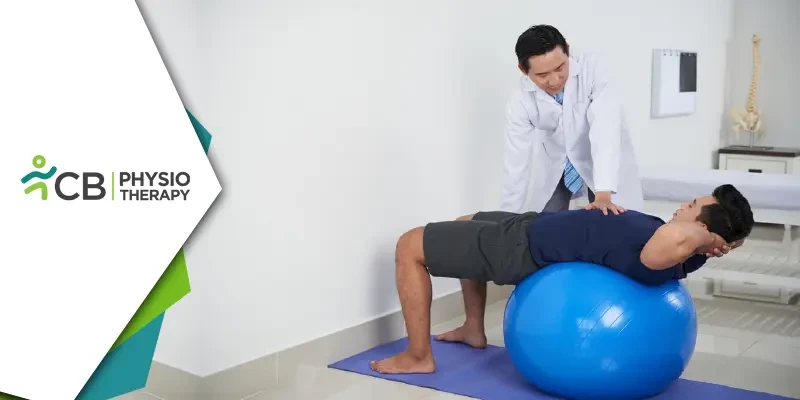Swiss ball physiotherapy, also known as stability ball or exercise ball therapy, has gained significant recognition in the realm of rehabilitation and fitness. This versatile tool offers a myriad of benefits, ranging from improved core stability to enhanced flexibility and balance. In this comprehensive guide, we'll delve into the profound effects of Swiss ball physiotherapy exercises, exploring how they can positively impact various aspects of physical health and well-being.
Understanding Swiss Ball Physiotherapy
Swiss ball physiotherapy involves performing a wide range of exercises and movements while utilizing a large inflatable ball. These exercises are designed to challenge balance, stability, strength, and flexibility, making them suitable for individuals of all fitness levels. The instability of the ball engages core muscles and stabilizers, promoting a more holistic approach to fitness and rehabilitation.1: Enhanced Core Stability and Strength
One of the primary benefits of Swiss ball physiotherapy exercises is their ability to target and strengthen the core muscles. The unstable surface of the ball forces the body to engage stabilizing muscles, including the abdominals, obliques, and lower back muscles. By performing exercises such as ball crunches, plank variations, and pelvic tilts, individuals can develop greater core strength and stability, which is essential for maintaining proper posture and preventing injuries.
2: Improved Balance and Coordination
Swiss ball exercises require constant adjustments to maintain balance, which helps improve proprioception and coordination. By performing exercises such as seated balance, ball bridges, and single-leg squats on the Swiss ball, individuals can enhance their ability to stabilize their body in various positions and movements. This not only reduces the risk of falls and injuries but also enhances athletic performance in sports and activities that require agility and coordination.
3: Enhanced Flexibility and Range of Motion
The dynamic nature of Swiss ball physiotherapy exercises promotes joint mobility and flexibility. By incorporating stretches and range-of-motion exercises on the ball, individuals can alleviate muscle tightness and improve flexibility in key areas such as the hips, shoulders, and spine. Exercises such as back extensions, hamstring stretches, and chest openers performed on the Swiss ball can help counteract the negative effects of prolonged sitting and sedentary lifestyles, promoting better posture and mobility.
4: Effective Rehabilitation Tool
Swiss ball physiotherapy is widely used in rehabilitation settings to aid in the recovery from injuries and surgeries. The instability of the ball allows for progressive rehabilitation exercises that challenge the muscles without placing excessive strain on injured joints or tissues. From postural exercises for back pain relief to gentle strengthening exercises for joint injuries, Swiss ball physiotherapy offers a safe and effective way to restore mobility and function following injury or surgery.
5: Versatility and Accessibility
One of the key advantages of Swiss ball physiotherapy is its versatility and accessibility. The ball can be easily incorporated into existing exercise routines or used as a standalone tool for full-body workouts. Whether at home, in the gym, or in a clinical setting, individuals can perform a wide range of exercises with minimal equipment. Additionally, Swiss balls are relatively affordable and portable, making them accessible to individuals of all ages and fitness levels.
Tips for Incorporating Swiss Ball Physiotherapy Into Your Routine
Start Slow: Begin with basic exercises and gradually progress to more challenging movements as your strength and stability improve.Focus on Form: Pay attention to proper form and alignment during each exercise to maximize effectiveness and reduce the risk of injury.
Mix It Up: Experiment with different exercises and variations to target various muscle groups and keep your exercises engaging and effective.

